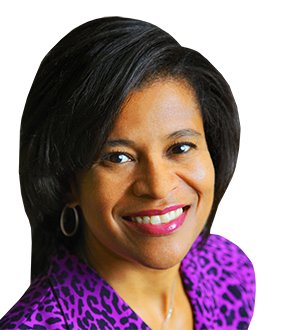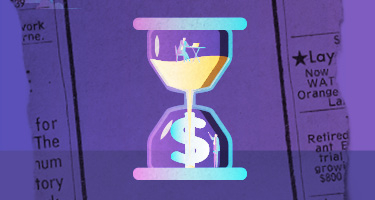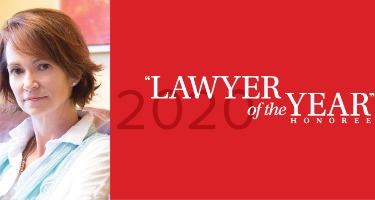DIVERSITY IN THE WORKS: Recognizing and Stopping Microaggressions in the Workplace
What Are Microaggressions?
“Death by a thousand cuts.” This is what microaggressions feel like to the impacted individual. Dr. Derald Wing Sue, a Columbia University professor and pioneer in the field of cross-cultural studies defines microaggressions as “brief and commonplace daily verbal, behavioral, and environmental indignities, whether intentional or unintentional, that communicate hostile, derogatory, or negative racial slights and insults to the target person or group.” The “micro” in microaggressions does not refer to the impact of the behavior. Rather, “micro” refers to the fact that microaggressions are personal interactions and slights, whereas “macro” refers to systemic racism (institutional systems and structures that have the effect of disadvantaging certain groups).
The term “microaggression” was first coined by Harvard-trained psychiatrist Chester M. Pierce in the 1970s to describe commonplace insults and slights directed at Black Americans. Dr. Pierce theorized that over time, being regularly subjected to microaggressions could negatively affect Black Americans’ physical and mental health.
Research into microaggressions expanded, and evidence reveals that microaggressions not only include slights based on race, but also gender, age, sexual orientation, and other protected classes. Google Trends shows that there was a sharp spike in interest after the murder of George Floyd in May 2020 sparked a nationwide conversation about race and racism.
While renewed interest in the term is a recent development, the concept is not new. Workplace microaggressions form the factual basis of many EEOC charges and Title VII lawsuits. Employees who experience microaggressions at work may have lower job satisfaction, higher incidents of absenteeism, and higher turnover. A study by Fortune Magazine showed that 68 percent of workers in the U.S. consider microaggressions to be a serious problem in the workplace. While only 10 percent of respondents admitted to committing microaggressions in the past, 36 percent said they had witnessed microaggressions in the workplace, and 26 percent said they had experienced microaggressions themselves. Addressing microaggressions in the workplace is not only a good practice for improving morale and increasing retention, but also critical for reducing the likelihood of employment law claims.
Types of Microaggressions
There are three main types of microaggressions: (1) microassaults, (2) microinsults, and (3) microinvalidations.
Microassaults occur when someone engages in intentional discrimination, bullying, or insensitivity. Examples include using racial slurs, telling racist jokes, displaying offensive symbols, and mocking a group’s cultural norms. Microassaults commonly form the basis of discrimination and harassment claims.
Microinsults occur when someone intentionally or unintentionally demeans another person on the basis of their protected class. Microinsults can be intentional or unintentional and are sometimes couched as compliments. Examples include asking a person of color how they got into an Ivy League school, assuming a woman is in a secretarial role, avoiding saying someone’s name because it is unfamiliar, expressing surprise that an older employee is skilled at using computers, commenting that a Black colleague is so articulate, complimenting an Asian colleague’s English, or reassuring someone that they are not like a negative stereotype imposed on their culture. In each case, the perpetrator is acting upon assumptions based upon a person’s membership in a culture or protected class. These comments send the message that “It is surprising that a member of your group is successful,” or “You do not belong here.”
Microinvalidations occur when someone intentionally or unintentionally excludes, ignores, or discredits a person based on their membership in a culture or protected class. One example is expressing color-blindness by making comments such as, “I don’t see color,” or “There is only one race: the human race.” This may have the effect of dismissing a person’s racial identity by sending the message that a person’s race and culture — which may be an integral and celebrated part of that person’s identity — are unimportant. Likewise, comments on meritocracy can be microinvalidations, such as, “Everyone can succeed if they work hard enough,” or “I succeeded by pulling myself up by my bootstraps, not by sitting back and waiting for a handout.” These types of comments dismiss the structural barriers that many people of color experience and can send the message that “People of color are given unfair advantages.”
What to Do About Microaggressions in the Workplace
Because many microaggressions are unintentional, it is important to educate managers and employees about how to recognize and avoid them. Employers should ensure they have a solid equal employment opportunity policy and a procedure for employees to report concerns. Employers should consider hosting training sessions to help employees recognize and avoid microaggressions. Since many people commit microaggressions without intending to offend — or even in a misguided attempt to compliment someone — there is an even greater need for training.
Leaders, managers, and human resources personnel should educate themselves about microaggressions and take action to challenge and stop microaggressions when they see them. One strategy for challenging microaggressions is to ask the perpetrator what they meant when they said something. For example, “Why did you press Sangeeta to tell you where she is from?” or “Could you explain what you meant when you told Reggie that he’s not like other people from Detroit?” Sometimes forcing someone to confront the thought process behind their comment is enough to make them realize that their statement was offensive. Education is key to disarming microaggressions because employees may become embarrassed or defensive when confronted. Leaders may find it helpful to explain why the employee’s actions were unacceptable while also recognizing that it was not their intent to offend.
Although these conversations may be uncomfortable, they can ultimately lead to a more inclusive, engaged, and committed workforce. Being proactive about stopping microaggressions is not only a good idea for preventing legal claims, it is also an investment in employee satisfaction and success.
If you have any questions regarding the issues addressed in this Alert or would like to schedule an internal training session please contact the author, Emily Chase-Sosnoff, counsel in our Tampa office at echase-sosnoff@fordharrison.com. Of course, you can also contact the FordHarrison attorney with whom you usually work.
This alert is part of our Diversity Legal Alert Series – Diversity in the Works. Members of FordHarrison’s Diversity and Inclusion practice group publish Alerts in this series addressing a variety of legal topics that may impact employers’ diversity initiatives. For information on other diversity, equity, and inclusion training modules available to your organization, including details on our recent six-part webinar series, click here. To inquire about our training resources, implementing diversity and inclusion programs and initiatives in your workplace, or FordHarrison's commitment to diversity please contact our Diversity and Inclusion Partner, Dawn Siler-Nixon, at dsiler-nixon@fordharrison.com.



























